 Chettinad silk sari weaving is one of Indian traditional clothing crafts. In India, sarees are still often handmade. There are various weaving methods in different parts of the country. Chettinad region in Tamil Nadu state of India is no exception. Here, sarees are skillfully hand-woven, and not so many artisans possess the skill today. That’s why the Chettinad silk sari weaving is the craft which needs protecting and developing.
Chettinad silk sari weaving is one of Indian traditional clothing crafts. In India, sarees are still often handmade. There are various weaving methods in different parts of the country. Chettinad region in Tamil Nadu state of India is no exception. Here, sarees are skillfully hand-woven, and not so many artisans possess the skill today. That’s why the Chettinad silk sari weaving is the craft which needs protecting and developing.
Chettinad region, Tamil Nadu state of India
Mulberry silk (raw silk) is most preferred for the making of Chettinad silk sari. Ready-made hank is available for the weaving process.
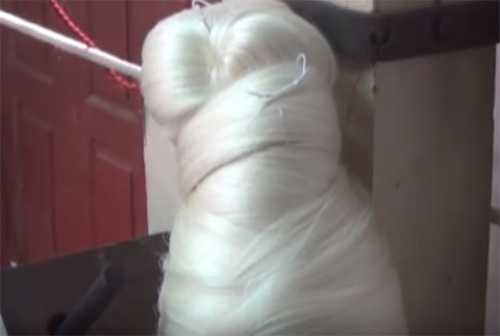
Yarns from the hank are wound on a swift (locally called “parivattam”).
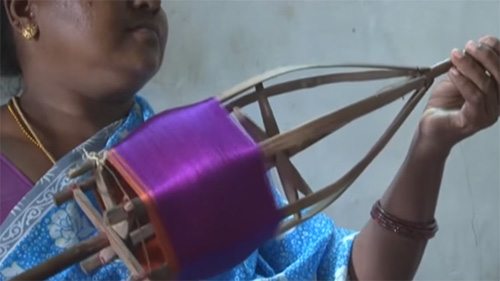
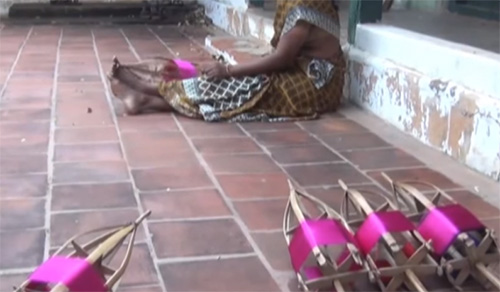
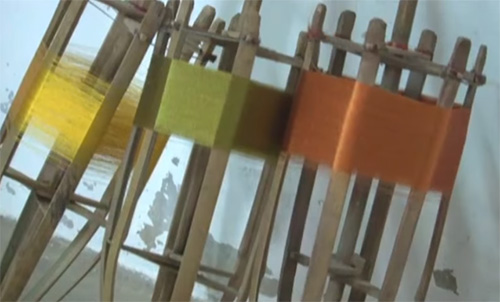
Yarns from the parivattam are wound to the pirns (small plastic sticks) using a charaka equipment – to make bobbins of thread for weaving.
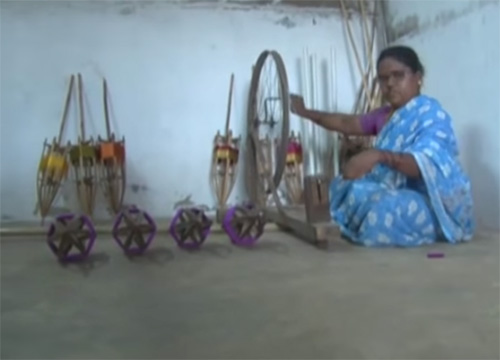
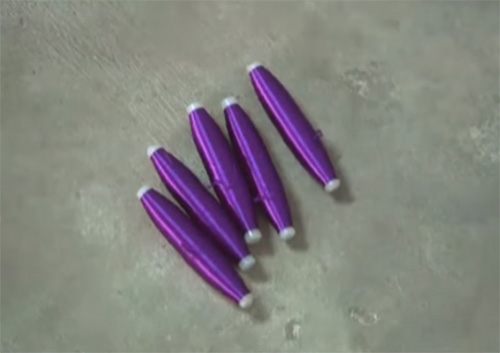
Woven cloth (called “saree pallu”) is wound on the beam tightly.
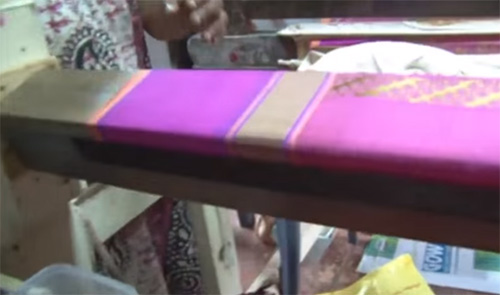
To make a color pattern, weft threads are inserted through the fly shuttle. And the weaving begins.
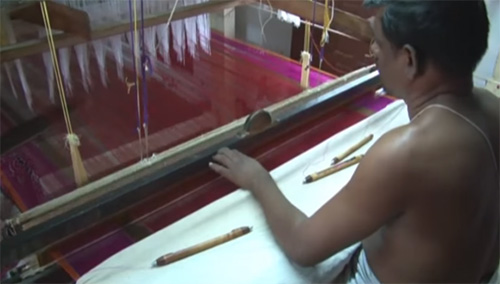
Wooden plank is used to avoid overlapping and to rearrange the yarns in additional wooden frame, which helps to achieve different patterns on a sari.
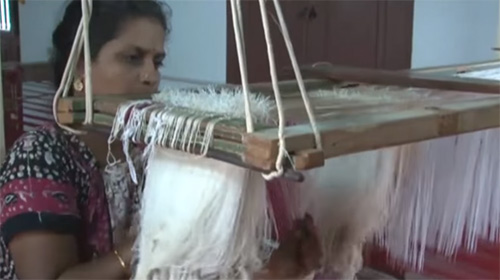
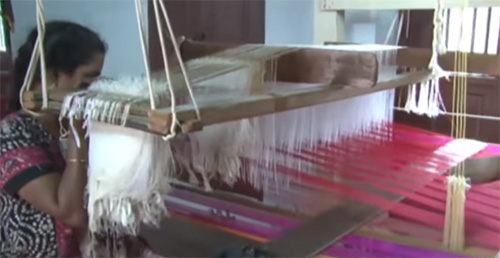
Chettinad silk sari weaving is very labor-intensive work and only trained weavers are able to do this.
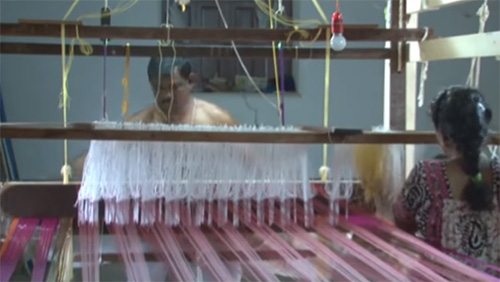
Zari patterns are inserted with a help of the yarn held by special hooks on the loom. This type of insertion can be found only in this weaving method.
Zari is a gold or silver thread used in sari making. Indian and Pakistani sarees are often adorned with zari designs, for instance, a zari border. But in many sarees, zari serves as the main material.
Generally, three small fly shuttles with different colors of yarn are used for the weft threads.

Some people of the Chettinad have taken a special interest in safeguarding the craft of silk sari weaving by encouraging and employing the artisans (weavers) in their premises.
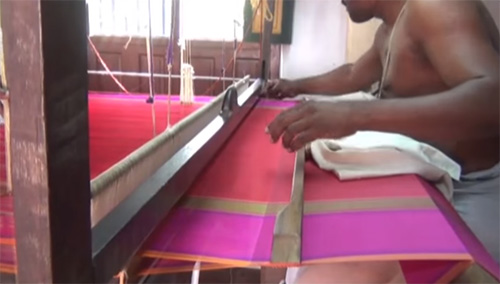
Usually, it takes minimum 10 days and 3 weavers to complete one sari. The price of such a sari varies from 6,000 rupees (about $84) to a lakh (100,000 rupees or $1,400).
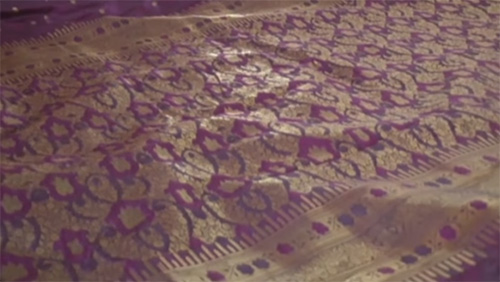
(c)


